At some point we are planning to put in a proper irrigation system, but I think the backyard remodel is a couple years out. Since I’ve been spending so much time learning about caring for a yard, I don’t want to let it die off during the summer months when we don’t get any rain. But I also don’t want to have to move sprinklers around the yard by hand and have hoses laying in the grass. By pulling up an aerial view of my property from King County, I realized that with three sprinklers, I could cover most of the front and side yard.
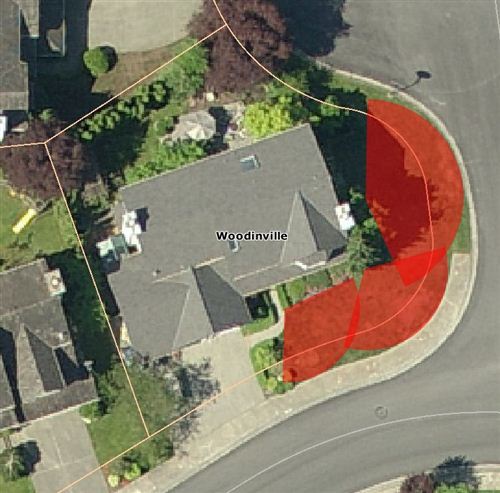
I picked up three Melnor spike sprinklers, a 100 foot 8 ply 3/4” hose, and some female and male hose repair ends. (On a side note, I’ve been so impressed with that brand of hose that I have picked up two more of them.) I took the brand new 100 foot hose and cut it into three sections to run from the spigot too the sprinkler and then on to each other sprinkler. The hose repair kit gave me new ends for the hose and that all works very well without leaks. Tim had given me a hose timer so once I get into regular watering mode, that will come in handy.
This setup fulfills my requirements of not having to move sprinklers around and I can leave it set up semi-permanently. The downside is that since each sprinkler is covering a different span, the yard isn’t watered evenly. Also, when we had a plumber add a pressure regulator valve to help with the water hammer in the house, he turned down our water pressure to 40psi. Now that I’ve installed arrestors on every termination point in the house, I was able to crank that up to 50psi. 40 wasn’t enough to power all three sprinklers but 50 is just enough.
I also added some Y valves to the middle sprinkler which allows me to selectively shut off sprinklers down the line. This will come in handy when I need to water that big first section a little longer, and it was also helpful for tweaking the water flow to each sprinkler.
It takes me about 75 minutes to put down 1/2” of water in the big section on the east of the house. (An easy way to measure it is to set a used tuna can out in the yard while you run the sprinklers.) Once we get into summer I’ll set it so that it puts down 1/2” twice a week. For now we’re getting a few tenths a week spread out over many days. I’ll supplement the rain with a deep watering every once in a while.
Hopefully this work will leave us with the nicest yard on the block!

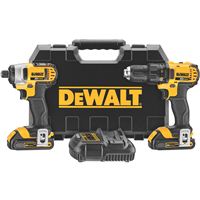 When I moved out on my own, my parents got me a 9V cordless Makita drill. It served me well through a ton of projects, but after 10 years, the batteries are worn out. It was either buy some new batteries or upgrade. After looking at the prices, I went with the latter and decided to keep the old drill around for smaller projects around the house.
When I moved out on my own, my parents got me a 9V cordless Makita drill. It served me well through a ton of projects, but after 10 years, the batteries are worn out. It was either buy some new batteries or upgrade. After looking at the prices, I went with the latter and decided to keep the old drill around for smaller projects around the house.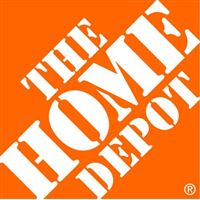 They say when you buy a house, the three most important things are location, location and location. I have about a five minute drive to Home Depot so I’d say our location is pretty great! The people there are starting to recognize me, and well they should. Here’s a breakdown of my transactions at Home Depot since we moved got the house at the beginning of October.
They say when you buy a house, the three most important things are location, location and location. I have about a five minute drive to Home Depot so I’d say our location is pretty great! The people there are starting to recognize me, and well they should. Here’s a breakdown of my transactions at Home Depot since we moved got the house at the beginning of October.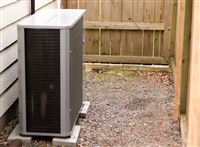 It’s so nice to have contractors that you can trust. For any heating question, I call up Chelsea’s Dad who owns PMG Mechanical (206) 624-5040. When we bought the house, I asked him to come over and inspect our equipment. He recommended replacing the water heater immediately and said the furnace would last us through the winter but not much more. These recommendations lined up directly with what we heard from our inspector.
It’s so nice to have contractors that you can trust. For any heating question, I call up Chelsea’s Dad who owns PMG Mechanical (206) 624-5040. When we bought the house, I asked him to come over and inspect our equipment. He recommended replacing the water heater immediately and said the furnace would last us through the winter but not much more. These recommendations lined up directly with what we heard from our inspector.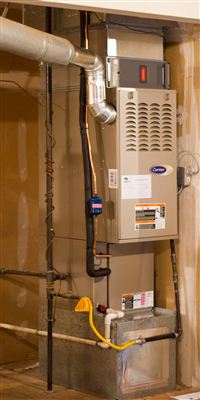 We ended up with a Carrier Infinity 80% efficient two stage furnace and a Carrier Infinity suitecase air conditioner. Brent recommended that we go with the 80% furnace over one of the high efficiency models because they just haven’t nailed the reliability of those models yet. The two stage furnace will give us a big boost because it only runs at partial power most of the time, but for the rare occasion when it gets really cold, the furnace kicks in full power. The fan is also incredibly efficient and costs almost nothing to run. The air conditioner is an extra small and quiet model that is normally installed in commercial locations where size and noise are a factor. In our case, it we only had about 5 feet to our property line and I wanted to still get yard waste bins and the lawn mower through. After it was installed, we still have 3 feet of clearance to the fence. It’s definitely a splurge but I’m betting we’ll think it was worth it as time goes on. Plus, we’ll be the party house when it’s hot outside! The final bit that we added to the bill was an electronic air cleaner. It increases air flow through the system, creates an allergy free environment, and is very easy to clean.
We ended up with a Carrier Infinity 80% efficient two stage furnace and a Carrier Infinity suitecase air conditioner. Brent recommended that we go with the 80% furnace over one of the high efficiency models because they just haven’t nailed the reliability of those models yet. The two stage furnace will give us a big boost because it only runs at partial power most of the time, but for the rare occasion when it gets really cold, the furnace kicks in full power. The fan is also incredibly efficient and costs almost nothing to run. The air conditioner is an extra small and quiet model that is normally installed in commercial locations where size and noise are a factor. In our case, it we only had about 5 feet to our property line and I wanted to still get yard waste bins and the lawn mower through. After it was installed, we still have 3 feet of clearance to the fence. It’s definitely a splurge but I’m betting we’ll think it was worth it as time goes on. Plus, we’ll be the party house when it’s hot outside! The final bit that we added to the bill was an electronic air cleaner. It increases air flow through the system, creates an allergy free environment, and is very easy to clean. For the first time in my life, I own dirt! Yard care is a chore for some people, but after years of living in apartments and the condo, I’m excited to have a chance at taking care of a yard. We’ll see long long that feeling lasts!
For the first time in my life, I own dirt! Yard care is a chore for some people, but after years of living in apartments and the condo, I’m excited to have a chance at taking care of a yard. We’ll see long long that feeling lasts!